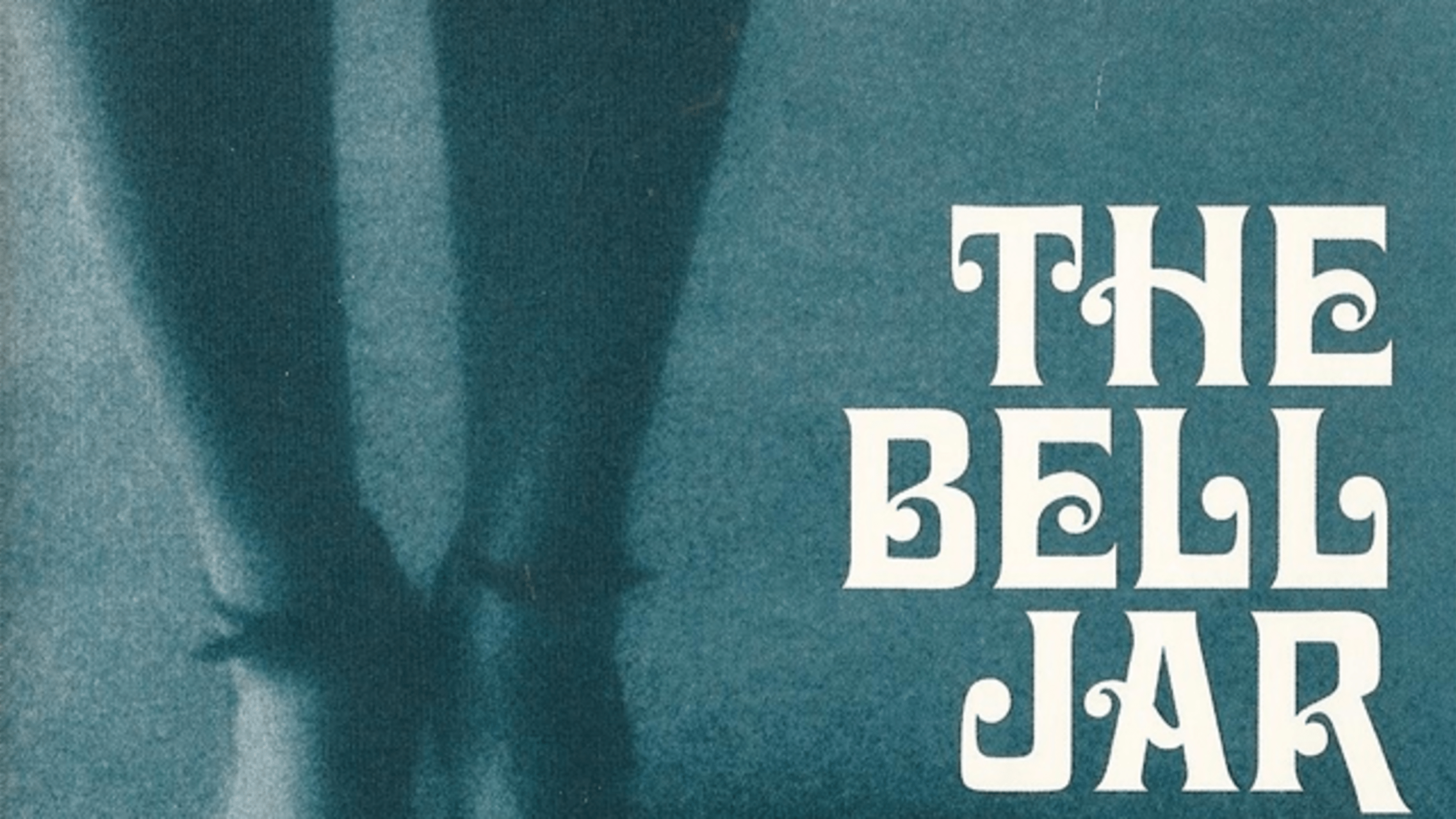In her only novel The Bell Jar, Sylvia Plath, the celebrated American poet and author, takes the route of making it semi-autobiographical originally under the pseudonym Victoria Lucas. Projecting her thoughts, attitudes and inclinations through Esther Greenwood, the main character of the novel, she establishes that she is no less than a feminist icon, who, although in a state of mental breakdown, tries to liberate herself from notions of what a woman should and should not be.
The novel can be triggering for individuals experiencing mental health issues at places but one cannot deny the fact that Sylvia Plath shows her dry and dark sense of humor by speaking of superficial parties in the fashion industry.
Plath excellently uses metaphor in her writing as is evident from the title of the book itself which refers to how she’s in a bell jar that makes her feel trapped and distorted.
Plath excellently uses metaphor in her writing as is evident from the title of the book itself which refers to how she’s in a bell jar that makes her feel trapped and distorted.
In nearly the beginning of the novel she describes choices before her as fig tree leaves in a fig tree that is her life. The iconic lines are as follows:
“I saw my life branching out before me like the green fig tree in the story. From the tip of every branch, like a fat purple fig, a wonderful future beckoned and winked. One fig was a husband and a happy home and children, and another fig was a famous poet and another fig was a brilliant professor, and another fig was Ee Gee, the amazing editor, and another fig was Europe and Africa and South America, and another fig was Constantin and Socrates and Attila and a pack of other lovers with queer names and offbeat professions, and another fig was an Olympic lady crew champion, and beyond and above these figs were many more figs I couldn’t quite make out. I saw myself sitting in the crotch of this fig tree, starving to death, just because I couldn’t make up my mind which of the figs I would choose. I wanted each and every one of them, but choosing one meant losing all the rest, and, as I sat there, unable to decide, the figs began to wrinkle and go black, and, one by one, they plopped to the ground at my feet.”
Here she does try to point towards how she is afraid that she might take a wrong decision and have to bear the brunt of it, be it, regret, loneliness or the a sense of being doomed due to wasted potential. It is surprising to know that this is one of the few times that Esther seems a little hopeful about life.
Also read: Book Review: ‘White Chrysanthemum’ By Mary Lynn Bracht
Eventually, Esther tries to kill herself multiple times due to an unending feeling of numbness but somehow fails. Her attempts come across less as a cry for help and more as a determined step which she tries to execute and wants to take by intensive planning.
Apart from mental health the novel also covers themes like chastity, how the medical system fails women and how a woman, no matter how talented and qualified, is expected to ‘settle down’ and ‘take care of her family’ once she gets married.
Apart from mental health the novel also covers themes like chastity, how the medical system fails women and how a woman, no matter how talented and qualified, is expected to ‘settle down’ and ‘take care of her family’ once she gets married.
But Esther, although quiet, introverted and socially awkward, is a rebel within who is determined to free herself from the clutches of societal expectations of how a woman should be and what she must do. She possesses a sense of confidence that is not derived from superficial attributes like beauty and accomplishments but from her strong analysis of the world that is designed for and primarily enjoyed by men and her distaste for the hypocrisy and double standards exhibited by this seldom subtly and seldom overtly misogynistic society.
She doesn’t care about the letter written to her from her mother about “chastity” and immediately loses interest in Buddy, who is both handsome and qualified after he exposes his double standards regarding the sexual histories of men and women. She has disdain for how the society sets virginity as a standard for women to be considered as virtuous meanwhile tolerating and even sometimes applauding sexual activity by men.
She actively seeks to have sex and lose her virginity to set herself free from these standards.
Also read: Book Review: Doing Feminisms In The Academy
Esther is also disappointed by how the medical system, like all other systems in the world is dominated by and catering to men. Her psychiatrist doesn’t understand her problems and she further descends into madness as a result of his callosity and indifference to recognizing women’s pain. She does however, improve under the supervision of a female psychiatrist in an elite psychiatric facility.
In the course of the novel, Esther also does seem to suffer from imposter syndrome as she never feels that she is good enough and is appalled by the smallest of what she considers ‘failure’.
Although the world knows of the tragic end to Plath’s life by suicide in 1963, it is worthwhile to read this eloquently written book to discover whether Esther finally is liberated from the bell jar.
Shivani Mohanty is a student of Anthropology currently living in Bhubaneswar. She is a radical feminist. She believes that liberation from all societal expectations from anyone who identifies as a woman is the path that leads to equality. She tries to advocate this through her writing. Follow her on Facebook and Instagram.
Featured Image Source: Mental Floss





Amazingly expressed❤
Done a great job❤